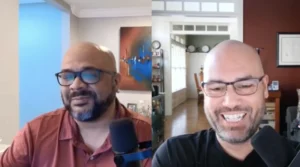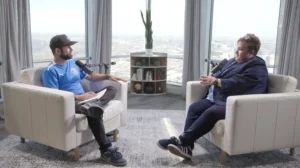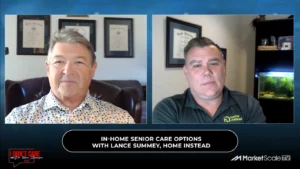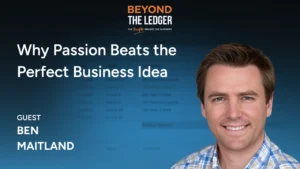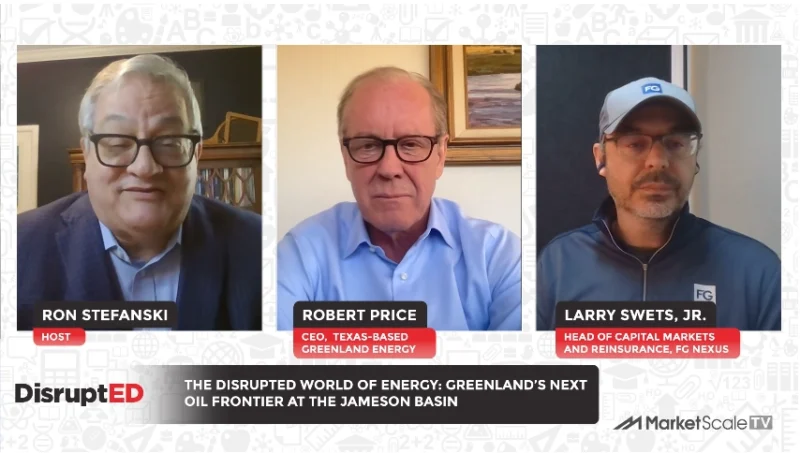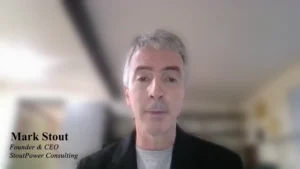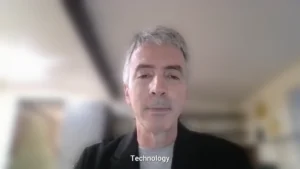Advanced Metering Infrastructure (AMI) is the Bridge to Better Energy Management and a Clean Energy Ecosystem Where Everyone Wins
Advanced Metering Infrastructure (AMI) 2.0 emerges as a beacon of innovation and sustainability in the face of rising energy costs and the urgent need for cleaner, more efficient energy use. AMI 2.0, characterized by its edge-computing capabilities, is redefining the landscape of energy management and conservation. By enabling real-time data access and greater control over energy usage, AMI 2.0 not only empowers consumers but also facilitates a more resilient and carbon-efficient energy grid.
Amidst this transformative era with AMI 2.0, MarketScale had the opportunity to capture an insightful discussion at DISTRIBUTECH 2024 with Brian Walsh, digital transformation strategist and smart meter expert. Walsh shared his experiences and the challenges faced in integrating AMI technologies, highlighting the journey towards a cleaner, more sustainable energy future.
Brian’s Thoughts
“Some of the things that are challenging with AMI is kind of all of it.”
The Promise and Challenges of Advanced Metering Infrastructure
” I was talking with somebody a couple of nights ago, and I said, we’re spending this much and the person said, sorry, what? Say that again? This is a huge investment. It’s an investment that we want everyone to have opportunities to save money, conserve energy use, choose clean energy, have opportunities to sell power back, get prices that are reasonable and fair.
Energy costs have gone up and up and up over the last few years. We’ve seen geopolitical things change, and we’ve seen power prices continue to shift and change with that. It’s been really, really difficult as a customer. And I’m a customer, you’re a customer. So what are we doing about that?”
Towards a Greener, More Efficient Future with AMI
“Well, we have these meters, electric meters, they’re end of life anyway. People have to walk around the neighborhood to check the meter. People have to drive their truck with radio to check the meter. Can we reduce that carbon footprint? Can we redeploy those jobs into more intellectual capital positions rather than, I mean, I don’t know about you, but I didn’t go to college thinking, I want to walk around and read meters for a living.
So there’s a lot of opportunities there, but a lot of people have gone forward with AMI, and it’s been a very hard journey. And it has not been an easy journey for us either. But what I’ve been talking about and what I’m really thankful to share and to evangelize is we’ve looked at this as it’s a lot of money, we want to make the investment the right way.”
Collaborative Efforts for a Sustainable Future
“Our goal is to enable the clean energy transformation for everyone. So if we enable the clean energy transformation for everyone, how can we best do that with this amount of money that the New York Public Service Commission and the Massachusetts Public Service Commission have afforded us?
We have identified that having a flexible stack that is future-proof and can work interoperably with other companies, companies that have best-in-class technology, that’s the right investment for us. Yes, we as the utility company would prefer that we redeploy those jobs from walking around and checking the meters to work that really closely serves our customer. However, our goal is not to build software that other vendors provide much better solutions.
Maintaining those softwares built by ourselves are gonna be very costly. It’s gonna consume a lot of human capital. It’s gonna be more expensive for ratepayers. So part of it, Dan, is how can we use this investment the right way? How can we build so it’s future-proof? And then also, how can we continue to do what we’re best at, which is keep the lights on?”
National Grid’s Commitment to Customer Service and Innovation
“What I’m so proud about at National Grid is our ability to get out there and fix it when a storm comes up. And this find-it-fix-it approach is really at our core. Each of us at National Grid have a storm-duty job. The duty of the storm is, my job is to make bologna sandwiches and have gram bags ready so that when people are out there fixing power lines, that they can quickly get food. Or my job is to make sure people have comfy pillows so that when they’re done working a hard day in the middle of a storm, that they have a safe place to go to rest at and that they know they can get a good night’s sleep without having to worry about driving home in a hard storm.
There’s a few other things that we’re doing at National Grid with AMI and my goal in talking about this is not to praise ourselves. It’s more to say, what are we doing? What are others doing? And how can we learn from each other?”
Fostering Industry Collaboration and Learning
“One of the unique and exciting opportunities in our industry is being able to work with our peer companies. We are not competing with Duke Energy, Southern Companies, Xcel. We are peers, you know? It’s like the healthcare space. If I have a hospital and you have a hospital, Dan, we’re still gonna deliver babies.
It’s just that my hospital’s gonna deliver the babies that are born over here and your hospital’s gonna deliver the babies that are born over there. If you have somebody at your hospital that has a need that my hospital’s better at, you wanna refer them over to my hospital. If I have somebody who has a need where you have a physician who’s better there, I wanna refer them to your hospital.
We wanna utilize really what we’re best at and so with AMI and National Grid, we’re looking at what are we best at? We’re best at keeping the lights on, putting things together, knowing how our business works. And so we’ve built our AMI in that flexible, interoperable method and way of being and what I’ve been really thankful to talk about is we’re not done yet. A lot of companies are curious, you know, what can they learn from us?
You know, one of the things, Dan, that I’ve talked about a few times and I’ve been really fortunate to do it is they say, well, Brian, how did you get started? And I say, well, I’ve done this a few times before. I did it with Samsung, selling phones direct to consumer. I did it at US Bank, building the number one banking app in America and so we’re doing it again here.
The focus here is the same as what we did with Samsung, the same as what we did at US Bank, which is get really, really smart people that are good to work with and put them in places where we can then define how do we build this architecture that’s flexible and future-proof. Then as we scale, as we start to envision that, as we start to build the code, then put really smart people around those people and then create these, if you will, like musical bands that play different types of music.
And then as these musical bands are playing the billing songs and they’re playing the meter field operations songs, and they’re playing the reporting and enablement songs, and they’re playing the platform and the integration songs. As the integration band is playing the integration songs, let’s continue to bring them new music. Let’s continue to funnel them, people that want to listen to that music. Or in software, the way we say it is, bring the work to the team. Don’t bring the team to the work. And continue to bring the work to the billing team, the meter field team, the reporting team, the integration team. Let those teams continue to play their music. And as they play that music, then the focus becomes how much is left? Where is that sweet spot where we start to redeploy those teams? And the nice thing about all those teams, Dan, those teams are needed through our company long-term.
Our billing AMI team can then help to upskill and retrain our current billing platform team. Those folks can come into that billing platform team and they can help that billing platform team continue to realize the future where our current billing capabilities may be, where are our desires for our future capabilities?”
Innovative Approaches to Deployment and Customer Engagement
“Similarly, with our integrations, what are our platform integrations? What is our platform engineering team doing to look at integrations of the future? What is our meter field operations team looking at long-term for operating this private cellular network and mesh backhaul and WISON technology system?
We’ve chosen to make it a little hard on ourselves. We’re the first deploying the Revelo meter from Landis and Gyr. We’re using the meter that has WISON. We’re deploying it using this product model of keep the bands together. We’re the first that has deployed real-time consumer applications on the meter that process the data at the edge, then quickly send small packets of information back on the network and then give the customer real-time desegregation information and we’ve decided to do all those things at the same time.”
Adapting Agile Methodologies for Effective Implementation
“You know, another question that may be coming up and you might be curious about watching this is, well, how did we do it? We did it with Scaled Agile Framework, SAFE. And we chose
Scaled Agile Framework because we have found, I have found in my career, that I would always work these big projects and they would fail. They wouldn’t make a dollar money. They would cost millions of dollars to set up and they would not meet the mark for the customer.
And I keep thinking about that little image that you see on the internet about the software folks hear the business folks say that they want a tire swing. And then the business folks think that that tire swing is like a Cadillac tire swing. And then the engineers see that tire swing as like, how does it perfectly work and it’s safe and it’s, you know, the optimal use method. And then the created tire swing is this discombobulated, you know, it doesn’t work. And so we built it that opposite way, which is, I call it the skateboard approach. You could see that if you have heard about the Spotify model and things like that. But the approach is walking from place to place takes a long time. Well, what if you had a skateboard? You can move a little faster.
Yeah, long-term, you wish you had a teleportation device and you could quickly go from here to there. But building a teleportation device with today’s technology takes a lot. So maybe you settle for a private jet. Well, building a private jet from scratch takes a lot too. So build a skateboard.
A skateboard’s kind of easy. You got, you know, four wheels, a board, something between the wheels and the board, screw it together, step on it, and use your own momentum to get that thing going. We can build a skateboard quickly and then we’re moving faster.
Well, maybe we say, you know what? What’s another interim approach? We can build a bicycle. What’s another interim approach? We can build a Toyota Camry. That thing’s reliable, it works. Then we’re like, you know what? We’re gonna build that super plane. And we’ve taken that approach. So our first step was get approval from the regulators. Our second step was how quickly can we get something in place to prove to them that our model, our economics of how we’re planning to do this with that skateboard approach is going to work.
So we said, well, what’s the fastest way to get this done? We can do base billing. All we have to do for base billing is get the meter plugged in, get the data from the meter, get that data from the meter extrapolated, adjusted, and transformed into what we need for our billing platform, get it into our billing platform, and then make sure that that data can be billable.
So we were able to build that in about nine months and we decided to deploy that in nine months so that we could prove to the regulators, prove to the industry that this is possible and you can do it too. Now, that was that stage where we had those experts. The next stage was build the things that can build on that so that we can deploy instead of five people or a small cohort of people, that we can start deploying en masse, that we can start deploying in neighborhoods, we can start deploying with thousands and hundreds of thousands of customers.
Well, that was a big step. And getting to that step really required all of that build out of processes and getting comfortable prioritizing things. We use Scaled Agile. So we had every three months, we get together, we talk about our priorities, we figure out how we’re going to put this thing together. And then the next months after that, we build it. And then we plan again and we build it. We plan again and we build it. And what we found through those stages is there’s a lot of challenges as we work with these new technologies. We had various issues.
One of our issues was a odd network border router reboot problem. Once it hit about 50% of the expected load capacity of data, that thing would just reboot. We couldn’t figure it out and it was deep in the guts of the firmware. But you know what? Being able to find it out, to learn from it, and then to use those learnings as we continue and continue and continue, that has helped our team continue to grow closer together.”
Building Towards a Sustainable, Technologically-Advanced Future
“We’ve had a lot to learn. We’re currently at about a little under 100,000 meters deployed and our path is roughly 5 million total meters and modules to deploy. So it’s an exciting future. You know, something I didn’t mention yet that I should mention. Our goal with this is to provide everyone the opportunity to save money, everyone the opportunity to have this technology and we wouldn’t be able to do that if we required use of their home Wi-Fi network.
So another piece, another wrinkle to this is that network and having a good vendor to work with that can provide that cellular network and then get that data securely back into our data center, both cloud and on-prem. So it’s not easy. It’s taken a lot of work and we’ve learned a lot along the way.”
Article written by Sonia Gossai



